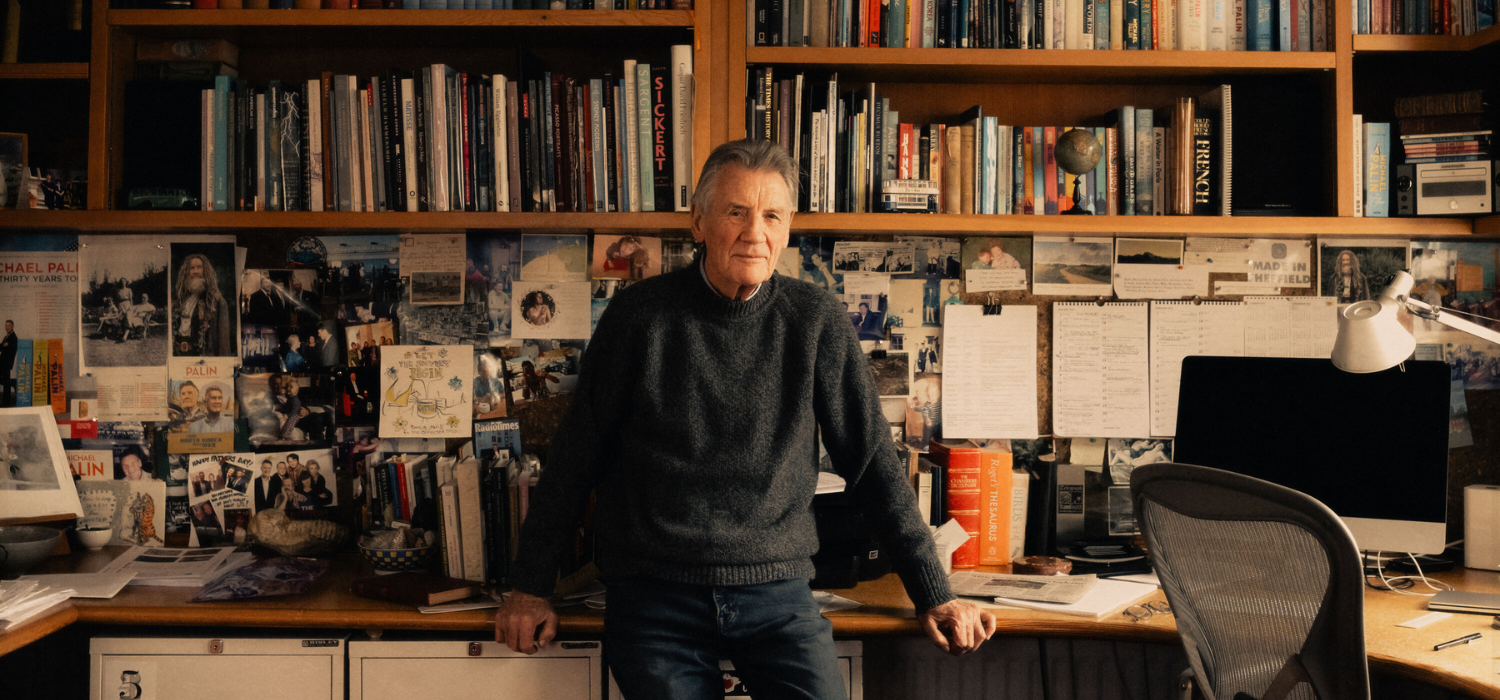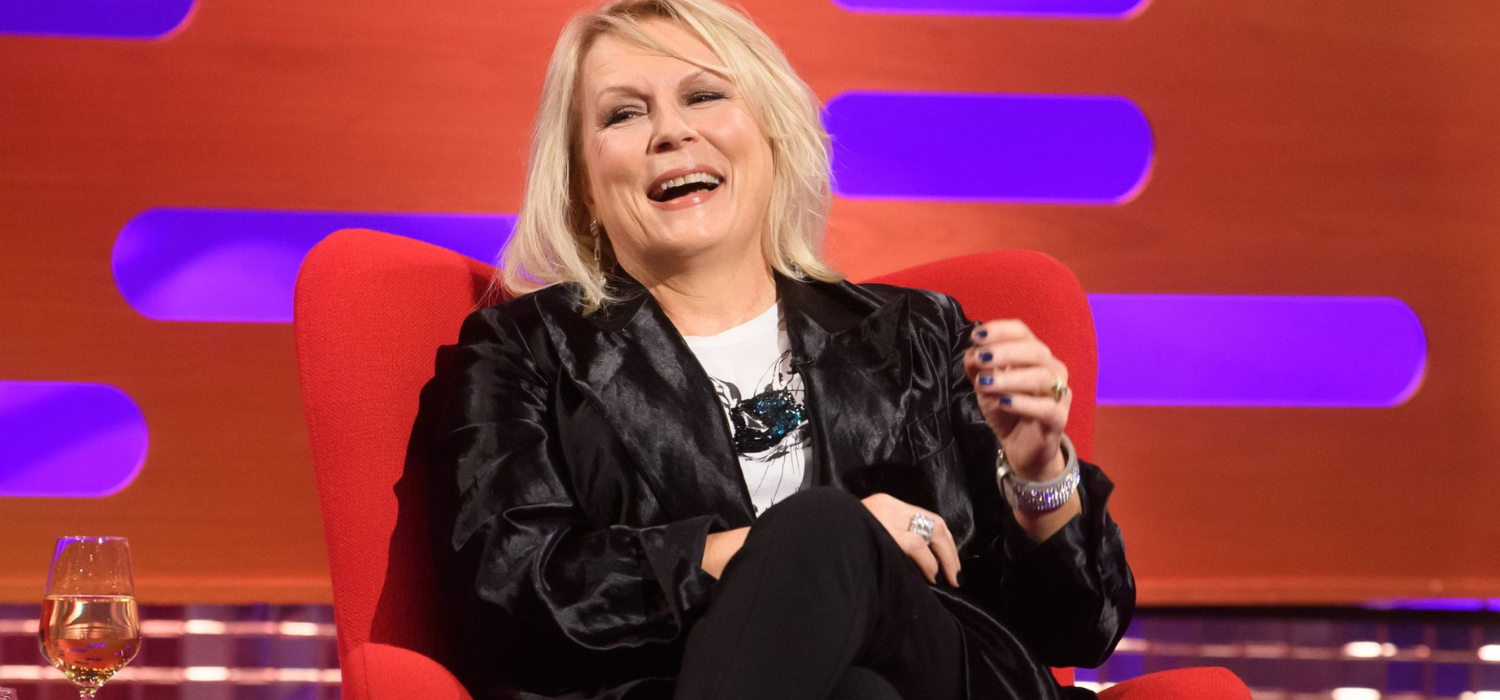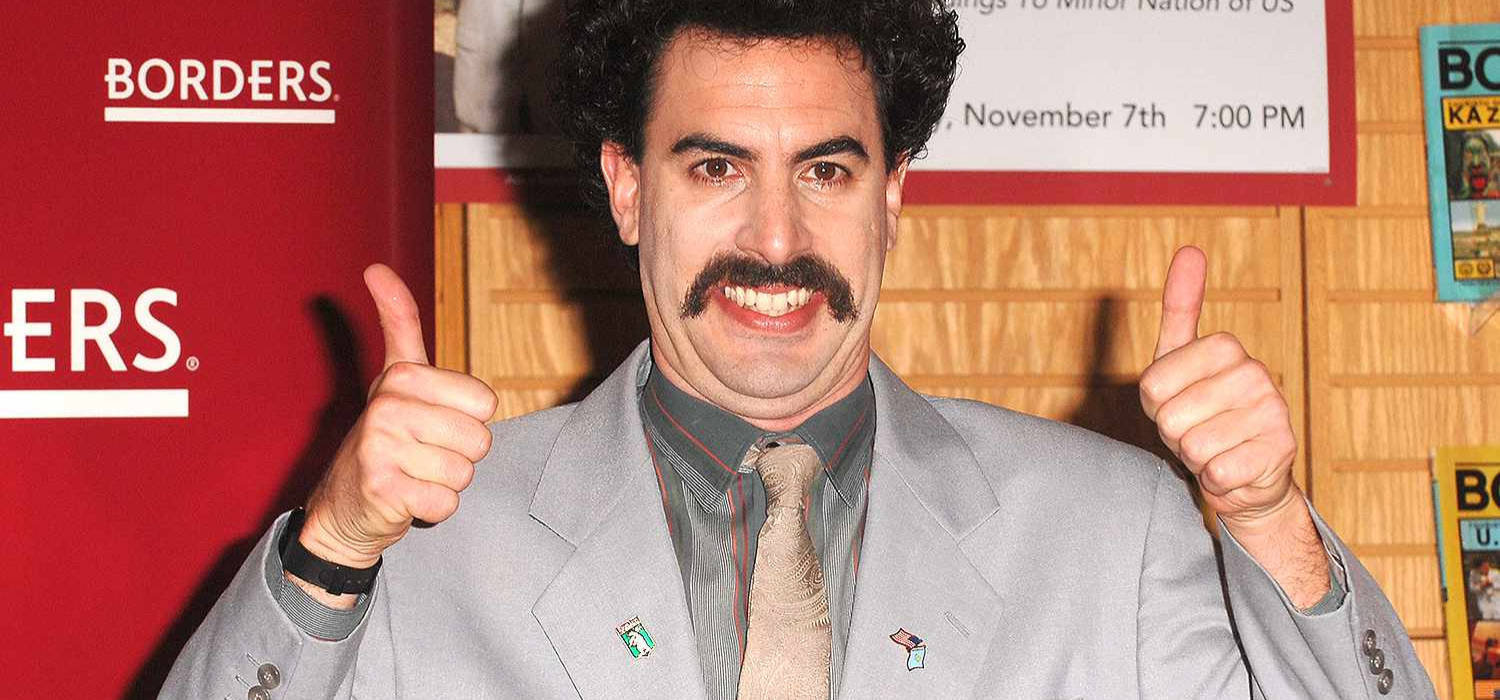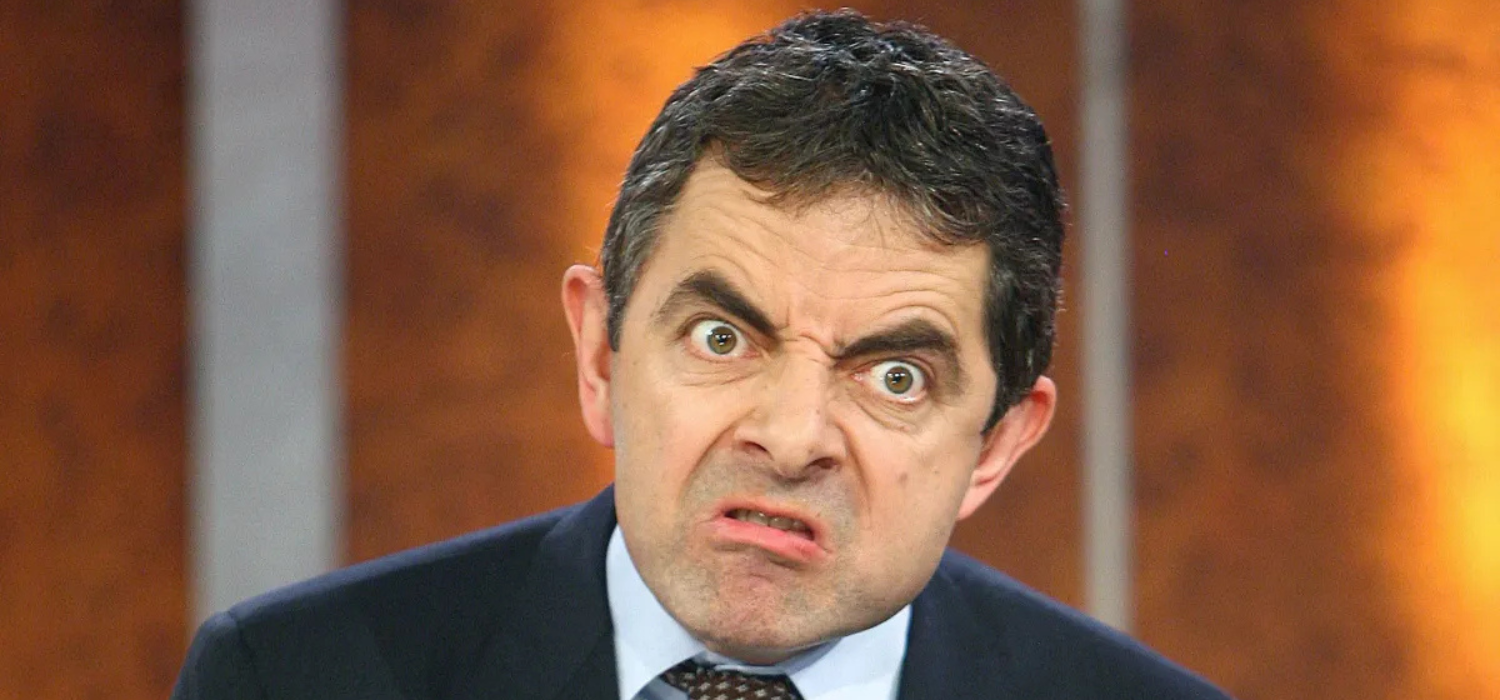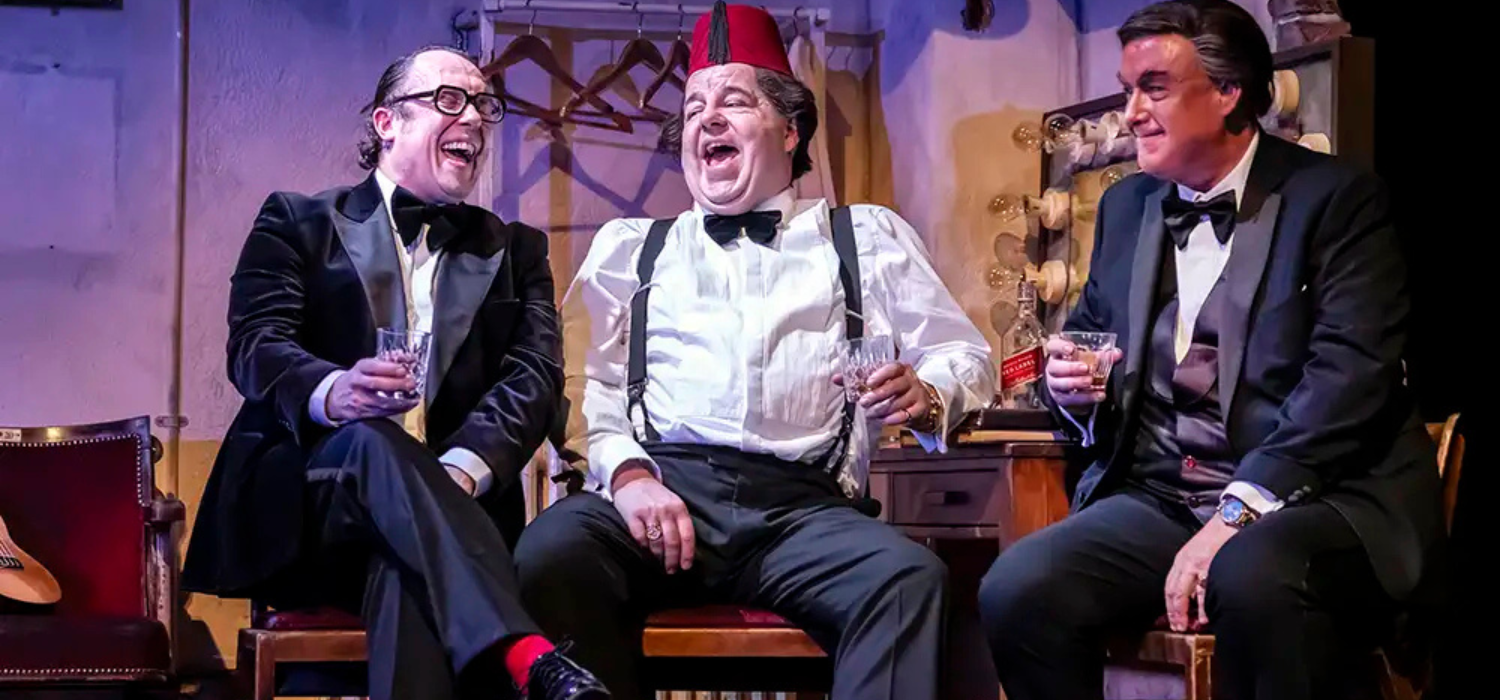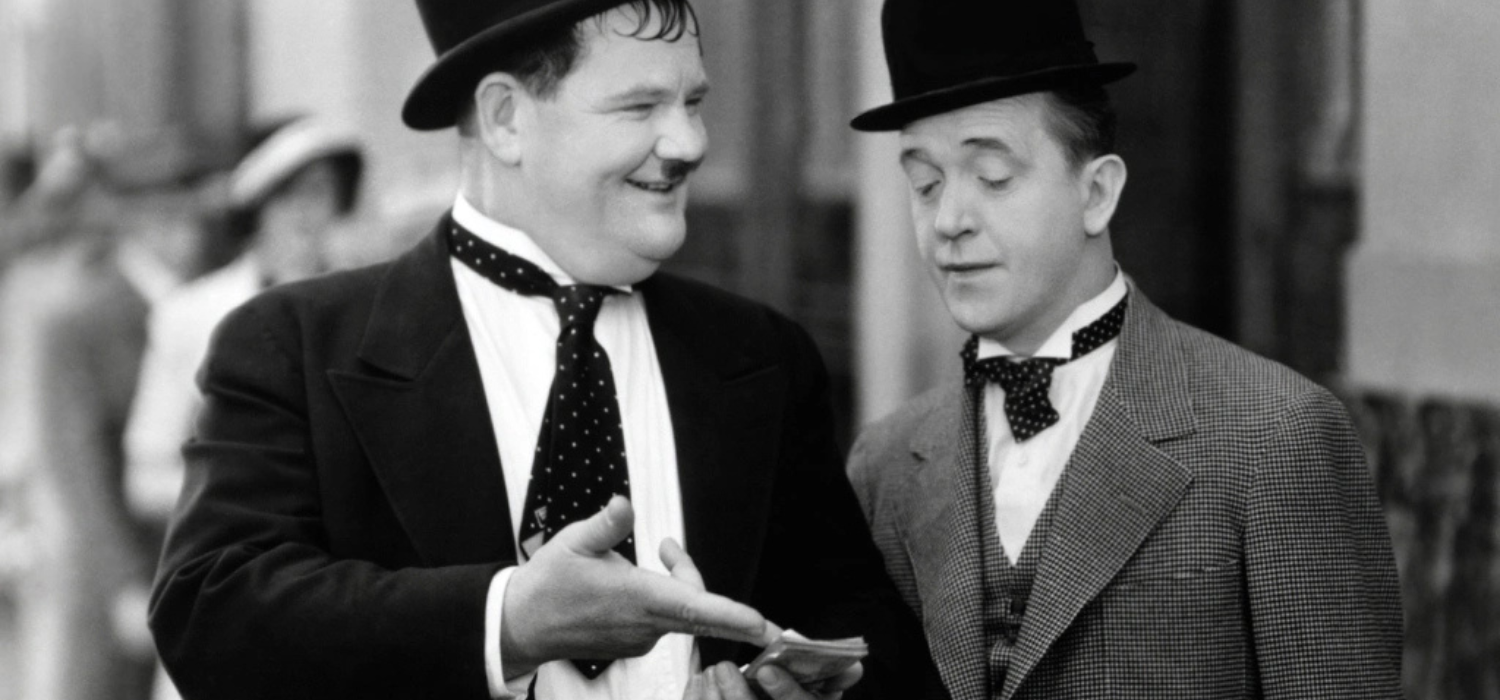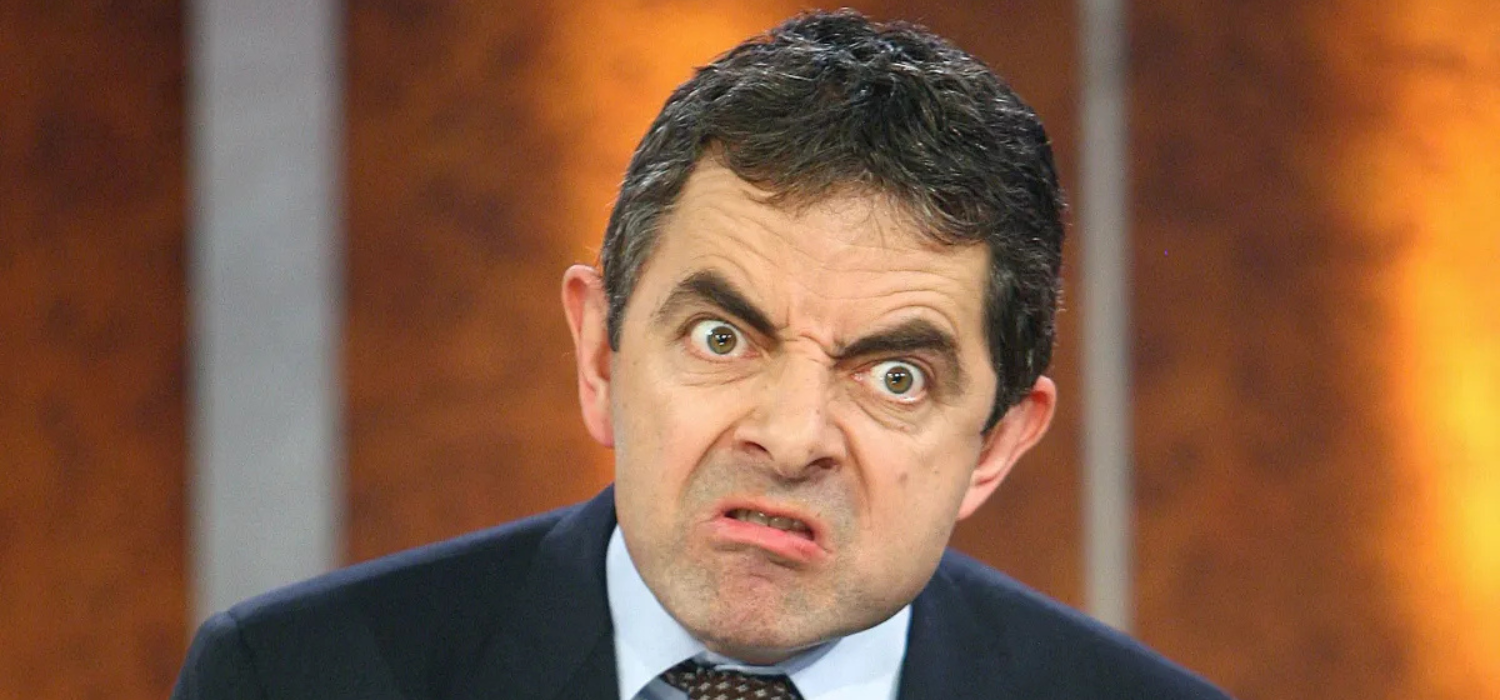Introduction: A Gentleman of Comedy When talking about the greatest names in British comedy, Michael Palin stands as a towering figure. Beloved for his warm presence, sharp wit, and versatile acting, Palin is much more than just a comedian. He is a writer, actor, traveler, documentarian, and one of the most admired public figures in Britain. Best known as a member of the iconic Monty Python troupe, Palin’s work shaped the face of modern comedy and continues to inspire performers worldwide. His career spans decades, and his influence stretches across theatre, television, cinema, and literature. This blog explores Michael Palin’s incredible journey — from his early life and career beginnings, to his role in Monty Python, and finally his legacy as one of comedy’s true greats. Early Life: The Making of a Storyteller Michael Edward Palin was born on May 5, 1943, in Sheffield, England. His childhood provided the seeds of his creative spirit. From an early age, Palin was fascinated by storytelling, often inventing characters and short plays for fun. These formative years were not just about education but about building the creative instincts that would later shine in Monty Python. The Pre-Python Years: Television and Comedy Beginnings Before Monty Python became a cultural phenomenon, Michael Palin was already active in British comedy. His early work included: By the late 1960s, Palin was already recognized as a promising comedic voice. The Birth of Monty Python In 1969, Michael Palin became one of six founding members of Monty Python’s Flying Circus, alongside John Cleese, Graham Chapman, Terry Gilliam, Eric Idle, and Terry Jones. Together, they revolutionized comedy. Breaking the Rules of Comedy Monty Python defied traditional sketch formats. Instead of building toward a single punchline, their sketches often ended abruptly, bled into each other, or dissolved into animated sequences. This surreal, anarchic style became their signature. Palin’s Role in the Group Michael Palin quickly became the troupe’s “everyman” — charming, relatable, and versatile. His natural warmth balanced the more abrasive humor of Cleese or Chapman. Some of his most beloved contributions include: Palin’s ability to play ordinary men caught in absurd situations became a hallmark of his comedic style. Signature Characters and Sketches Michael Palin’s strength lay in his versatility. He could play: Some of Palin’s unforgettable performances include: Palin’s blend of charm and comic timing made him one of Monty Python’s most universally adored members. Monty Python on the Big Screen Palin’s contributions extended far beyond television. He played central roles in Python’s films: These films cemented Monty Python’s reputation as pioneers of comedy cinema. Partnership with Terry Jones Michael Palin shared a special creative bond with fellow Python member Terry Jones. The two co-wrote many sketches and often worked together outside of Monty Python. Jones and Palin’s collaboration enriched both of their careers, proving that their creative magic extended well beyond Monty Python. The Gentle Face of Monty Python While Monty Python thrived on chaos, satire, and often shocking humor, Michael Palin emerged as the troupe’s “gentleman.” Known for his kindness and humility, he balanced the more extreme personalities in the group. His warmth made audiences connect with him, whether he was playing a silly character or narrating a surreal sketch. This quality not only made him beloved within Monty Python but also laid the groundwork for his future career as a presenter and documentarian. Transition Beyond Python By the mid-1980s, Monty Python had largely concluded their group projects. For Michael Palin, this was not an end but the beginning of a new chapter. He continued to act, write, and perform, but soon he would reinvent himself in ways that surprised both fans and critics. Transitioning Beyond Monty Python After Monty Python’s major projects concluded, Michael Palin faced a crossroads. Many members went on to solo comedy projects, while some focused on writing or directing. Palin, however, chose a unique path: combining his love for storytelling with travel, history, and documentary filmmaking. He demonstrated that a comedian’s wit could blend seamlessly with intellect and curiosity. His career post-Python proved that humor could serve as a bridge to explore culture, geography, and human stories. Travel Documentaries: A New Chapter One of the most defining aspects of Palin’s post-Python career is his work as a travel documentarian. He has traveled extensively, bringing viewers along for the ride in a way few entertainers have ever done. Through these projects, Palin became known as the “gentleman traveler” — intelligent, witty, and relatable. His humor never overshadowed the stories he told; instead, it enriched them. Acting and Voice Work Beyond Monty Python While travel documentaries became a major part of his career, Palin never abandoned acting. He appeared in films, television dramas, and voice acting projects: Palin’s acting post-Python demonstrated his ability to adapt to different genres — comedy, drama, and family entertainment — while maintaining his unique charm. Writing: Beyond the Screen Palin’s literary contributions are another facet of his diverse career. He has authored travel books, diaries, and humorous essays that reflect his wit and keen observations: His writing style mirrors his on-screen persona: insightful, witty, and accessible. It allows fans to enjoy his humor in a reflective, literary format. Awards and Recognition Michael Palin’s career has been marked by numerous honors: These accolades reflect not only his comedic talent but also his versatility and humanity. Collaborations and Partnerships Palin’s career, both in and out of Monty Python, is marked by collaborations: Legacy in Comedy and Culture Michael Palin’s influence stretches far beyond the comedy troupe he helped create. His legacy includes: Impact on Modern Entertainment Comedians and entertainers today cite Palin as an inspiration: Michael Palin’s Philosophy of Comedy Michael Palin approaches comedy with a unique blend of intelligence, humility, and warmth. Unlike many comedians who rely solely on shock or provocation, Palin’s humor is rooted in observation, empathy, and timing. Key elements of his comedic philosophy include: This philosophy has allowed him to maintain relevance over decades and appeal to multiple generations. Behind-the-Scenes of Monty Python Michael Palin’s
Comedy Icon: Jennifer Saunders and Her Unforgettable Characters
Introduction: The Enduring Brilliance of Jennifer Saunders Few names in British comedy shine as brightly as Jennifer Saunders. For over four decades, she has been a force of wit, satire, and unforgettable characters who shaped not only the UK comedy scene but also resonated across the world. From her groundbreaking sketch work with Dawn French to her era-defining sitcom Absolutely Fabulous, Saunders has cemented herself as a legend in entertainment. Her talent lies not only in writing clever scripts but also in breathing life into eccentric, flawed, and hilarious characters that audiences cherish. This blog takes a deep dive into Jennifer Saunders’ journey — from her early influences to the unforgettable personas that turned her into a global comedy icon. Early Life and Inspirations Jennifer Jane Saunders was born on 6 July 1958 in Sleaford, Lincolnshire, England. The daughter of a Royal Air Force pilot, she grew up in a household that valued discipline but also gave space for creativity. Her childhood was shaped by frequent moves due to her father’s military postings, giving her exposure to varied environments and characters — experiences that later enriched her ability to craft authentic yet exaggerated comedic figures. Saunders attended boarding schools before enrolling in the Central School of Speech and Drama in London, where she originally trained to become a drama teacher. However, fate had other plans. At the school, she met Dawn French, another student who would go on to become her lifelong comedy partner. Their friendship and creative chemistry laid the foundation for some of Britain’s most beloved comedy acts. The French and Saunders Partnership Jennifer Saunders’ first major breakthrough came through her collaboration with Dawn French. Together, they developed the sketch show “French and Saunders” which debuted on the BBC in 1987. The show was a revelation. It spoofed everything from Hollywood blockbusters to pop culture trends, often with biting satire and slapstick humor. What made French and Saunders so impactful was their ability to blend high-brow parody with accessible silliness. The pair could take on the roles of Madonna, Hollywood stars, or gritty everyday characters, always with impeccable comedic timing. Some highlights from French and Saunders: Through this platform, Saunders honed her skills not only as a performer but also as a writer, developing the sharp, satirical edge that would later define her solo success. Breaking Out with Absolutely Fabulous In 1992, Jennifer Saunders launched her magnum opus: Absolutely Fabulous (Ab Fab). The show, inspired by a sketch she had written for French and Saunders, centered around the chaotic lives of Edina Monsoon (Saunders), a self-absorbed PR agent, and her chain-smoking best friend Patsy Stone (played by Joanna Lumley). Unlike traditional sitcom heroines who were often nurturing or relatable, Edina and Patsy were narcissistic, reckless, and unapologetically flawed. Yet audiences adored them. Key elements that made Ab Fab revolutionary: The show was an international hit, earning Saunders BAFTA Awards, an International Emmy, and cult status in the US. It also spawned multiple revival seasons and even a feature film in 2016. Saunders’ Signature Style of Comedy Jennifer Saunders’ comedy stands out for its unique qualities: Beyond Ab Fab: Expanding Horizons While Absolutely Fabulous remains her defining work, Saunders has taken on a variety of projects across film, television, and voice acting: Each project reinforced her ability to adapt while maintaining her unique comedic essence. Legacy in the Comedy Landscape By the mid-1990s, Jennifer Saunders had already established herself as a titan in British comedy. Her influence extended beyond her own shows — she paved the way for a new generation of female comedians and writers, proving that women could headline, write, and dominate the comedy scene. Her characters, from Edina Monsoon to countless French and Saunders parodies, remain cultural touchstones. Lines from Ab Fab entered everyday conversation, and her comedic style continues to inspire both established comedians and newcomers. The Art of Creating Characters Jennifer Saunders is more than a comedian — she is a master craftsman when it comes to building characters. Whether through exaggeration, satire, or a simple knack for timing, her personas stay in the cultural imagination long after the credits roll. This part of her story focuses on her most unforgettable creations, analyzing not only why they worked but also how they reflected society at the time. Edina Monsoon (Absolutely Fabulous) Perhaps the crown jewel of Saunders’ career, Edina Monsoon is the epitome of excess and self-delusion. As a public relations guru obsessed with celebrity culture, Edina lives in a world of fads, diets, and luxury brands. Edina is unforgettable because she is both ridiculous and oddly relatable — we all know someone who is trying just a little too hard to stay “fabulous.” Patsy Stone (Though Played by Joanna Lumley, Defined by Saunders’ Writing) Though Jennifer Saunders did not portray Patsy, the character is one of her greatest written creations. The chain-smoking, hard-drinking, fashion magazine editor was Edina’s glamorous sidekick and partner in chaos. The Fairy Godmother (Shrek 2) When Saunders voiced the Fairy Godmother in Shrek 2, she brought her trademark mix of charm and sarcasm to the animated world. Unlike the sweet fairy godmothers of traditional fairy tales, Saunders’ version was manipulative, vain, and self-serving. Sketch Characters from French and Saunders Saunders’ sketch comedy gave birth to dozens of quirky and unforgettable characters. Some highlights include: These characters proved Saunders could embody anyone — from glamorous stars to ordinary housewives — and always find the humor within. Clarissa Dickson Wright (Let Them Eat Cake) In the historical comedy Let Them Eat Cake (1999), Saunders starred alongside Dawn French as two scheming aristocrats in pre-revolutionary France. Her role was exaggerated, bawdy, and deliciously ridiculous, showcasing her love for period parody. Guest Roles and Cameos Jennifer Saunders has popped up in numerous shows and films with unforgettable short performances: Even in small roles, Saunders’ comedic instincts leave lasting impressions. The Formula Behind Her Characters Across her career, Saunders’ characters share common DNA: Social Commentary Through Comedy Jennifer Saunders’ characters aren’t just funny;
From Monty Python to Modern Masters: UK’s Comedy Greats
The Birth of a Comedy Revolution: Monty Python’s Legacy When talking about British comedy, one name immediately rises above the rest—Monty Python. Formed in 1969, the group was made up of John Cleese, Michael Palin, Eric Idle, Terry Jones, Graham Chapman, and Terry Gilliam. Together, they changed the way the world thought about comedy. Their TV series Monty Python’s Flying Circus was unlike anything audiences had seen before. It wasn’t just sketch comedy—it was surreal, unpredictable, and gleefully absurd. What made Monty Python revolutionary was the refusal to stick to a traditional punchline structure. A sketch about a dead parrot didn’t end with a neat joke; instead, it spiraled into hilarity through repetition, exaggeration, and sheer madness. Their Ministry of Silly Walks sketch wasn’t just funny—it became iconic, symbolizing the group’s ability to turn the mundane into the absurd. Their influence spread globally. Comedy in America, Europe, and even Asia took cues from their experimental format. Shows like Saturday Night Live and The Simpsons bear traces of Monty Python’s genius. More than 50 years later, their work still feels fresh. And their films—Monty Python and the Holy Grail, Life of Brian, and The Meaning of Life—are considered comedic masterpieces. The group didn’t just make people laugh; they created a movement that shaped modern comedy. John Cleese: From Python to Fawlty Towers Among the Python team, John Cleese became a towering figure in his own right. After Monty Python, Cleese co-created Fawlty Towers, which is often hailed as one of the greatest sitcoms in television history. With only 12 episodes produced, it remains a masterpiece of comedic writing and performance. Cleese’s character, Basil Fawlty, is a hotel manager constantly overwhelmed by incompetent staff, demanding guests, and his own explosive temper. His physical comedy, sharp dialogue, and exasperated expressions made Basil one of television’s most memorable characters. What makes Fawlty Towers timeless is its mix of slapstick humor and biting satire, with Cleese balancing chaos and control in every episode. Cleese’s career extended far beyond British television. His performance in A Fish Called Wanda and contributions to films like Harry Potter and the Philosopher’s Stone showcased his ability to cross into global mainstream entertainment. More importantly, Cleese carried the Python spirit forward—proving that absurdity and sharp wit could coexist in mainstream comedy. Rowan Atkinson: The Silent Genius While Monty Python introduced the world to absurdist humor, Rowan Atkinson brought back the art of physical comedy. Best known as Mr. Bean, Atkinson became a global star by saying almost nothing. With rubbery facial expressions, bumbling antics, and exaggerated body language, he created a character that transcended language barriers. Mr. Bean didn’t just entertain British audiences—it became a worldwide phenomenon, spawning films, animated adaptations, and international acclaim. But Atkinson’s genius didn’t stop with Bean. He also starred in Blackadder, one of Britain’s sharpest and wittiest historical comedies. Each season took place in a different historical era, with Atkinson’s character shifting slightly in personality, but always retaining his signature dry wit and sarcasm. Supported by talents like Hugh Laurie, Stephen Fry, and Tony Robinson, Blackadder showed Atkinson’s range beyond slapstick. The duality of Atkinson’s career—silent, universal comedy with Mr. Bean and clever, dialogue-driven humor with Blackadder—cements him as one of the greatest comedians to come out of the UK. He proved that laughter can be sparked in many ways: sometimes through clever words, and sometimes with no words at all. The Rise of Alternative Comedy in the 1980s By the 1980s, comedy in the UK began to evolve once again. Audiences wanted something edgier, sharper, and more politically aware. This gave rise to what was known as “alternative comedy.” Unlike the traditional stand-up and sitcoms of earlier decades, alternative comedy challenged authority, mocked politics, and pushed the boundaries of what was acceptable. One of the defining shows of this era was The Young Ones, featuring Rik Mayall, Adrian Edmondson, Nigel Planer, and Alexei Sayle. The show was chaotic, loud, and anarchic. It broke away from the polished sitcom style, embracing randomness, slapstick, and heavy doses of satire. It was messy—but that was the point. It reflected the rebellious spirit of the times. Rik Mayall, in particular, became a standout figure of the alternative comedy movement. His manic energy, exaggerated performances, and outrageous characters made him unforgettable. Whether in The Young Ones, Bottom, or his partnership with Adrian Edmondson, Mayall redefined what a comedic performer could be. He wasn’t about subtlety—he was about pure, explosive energy. This new wave of comedy paved the way for future generations. It showed that comedy didn’t have to follow rules—it could be chaotic, political, and bold. French and Saunders: Sketch Comedy Royalty As alternative comedy was reshaping the landscape, two women were carving out their place in comedy history—Dawn French and Jennifer Saunders. Their show, French and Saunders, became legendary for its parodies, sharp wit, and playful chemistry. Together, they poked fun at pop culture, blockbuster films, and celebrity culture, but always with a sense of charm and fun. What made them stand out was their ability to parody without cruelty. Their sketches were hilarious, but they also celebrated the very things they were mocking. Separately, both found success as well. Dawn French starred in The Vicar of Dibley, a heartwarming sitcom where her comedic timing and warmth made the show a household favorite. Jennifer Saunders created Absolutely Fabulous (Ab Fab), which became a cultural phenomenon in the 1990s. Ab Fab’s over-the-top characters, wild storylines, and biting satire of fashion and media culture gave Saunders a permanent place in comedy history. Billy Connolly: The Big Yin of Comedy Scotland’s greatest comedic export, Sir Billy Connolly, is nothing short of legendary. Known affectionately as “The Big Yin,” Connolly brought a storytelling style to stand-up that was both deeply personal and universally relatable. With his Glaswegian accent, booming voice, and natural warmth, he could hold an audience in the palm of his hand for hours. What made Connolly unique was his ability to weave humor into stories from everyday life—whether about
Comedy Royalty: United Kingdom’s Legendary Comedians
Introduction: The Kingdom of Laughter The United Kingdom has long been celebrated for its rich cultural contributions—from literature and theater to music and fashion. Among these treasures, one of the most enduring legacies is comedy. For more than a century, British comedians have shaped humor not only at home but across the globe, inspiring audiences and entertainers alike. The landscape of UK comedy is as diverse as it is influential: slapstick, satire, stand-up, sketch shows, sitcoms, and surrealism all form part of this grand tradition. The idea of “comedy royalty” reflects the cultural reverence for these performers who, like monarchs of laughter, have ruled stages, screens, and hearts. This journey begins with early pioneers and continues through generations of iconic figures who each added their unique flavor to Britain’s comedy empire. The Birth of a Comic Tradition: Music Halls and Vaudeville Before the age of television, British comedy thrived in music halls during the late 19th and early 20th centuries. These venues were the foundation of popular entertainment, showcasing variety acts, including comedians who specialized in physical humor, witty wordplay, and sharp satire. Performers like George Formby Sr., Marie Lloyd, and later Max Miller became household names. Miller, often called “The Cheeky Chappie”, became one of the first major comedy stars to gain national fame, with his daring humor and flamboyant stage persona. Music halls set the stage for comedy as a profession, allowing comedians to transition into radio, film, and eventually television. This period also saw the development of the double act tradition, a hallmark of UK comedy. Partnerships of contrasting characters—such as the “straight man” and the “funny man”—would go on to dominate British humor for decades. Chaplin’s genius lay in combining slapstick with deep human emotion. Films like The Kid (1921), City Lights (1931), and Modern Times (1936) made audiences laugh while also highlighting social issues such as poverty and industrial hardship. Unlike many silent comedians, Chaplin transcended simple gags—he created stories that blended humor with pathos. Even after moving to Hollywood, Chaplin carried his British comedic roots with him, introducing the world to a distinctly English blend of cleverness and heart. His legacy as one of the greatest comedians of all time remains untouched, and he is rightly considered the first true king of comedy. Stan Laurel: Half of the World’s Beloved Duo Another British comedian who achieved global fame in Hollywood was Stan Laurel, one half of the legendary duo Laurel and Hardy. Born in Lancashire, Laurel brought a uniquely British sense of physical comedy and timing to his work with American partner Oliver Hardy. Together, they defined the double act formula that would inspire countless others: the bumbling, innocent fool (Laurel) paired with the pompous straight man (Hardy). Their films, such as Sons of the Desert (1933), continue to entertain new generations. Laurel’s influence on British comedy is profound—his style of wide-eyed innocence, physical pratfalls, and emotional sincerity can be seen in comedians from Norman Wisdom to Rowan Atkinson. He remains a cornerstone of comedy royalty, showing how British humor could resonate universally. The Goon Show: Surrealism Before Its Time In the 1950s, radio was the dominant medium for comedy, and nothing shook the airwaves quite like The Goon Show. Created by Spike Milligan, with co-stars Peter Sellers and Harry Secombe, the program introduced surreal, absurdist humor that was decades ahead of its time. The Goons created bizarre characters, nonsensical plots, and groundbreaking sound effects that left audiences in stitches. Milligan’s manic creativity and Sellers’ incredible range of voices set new standards for comedy performance. More importantly, The Goon Show laid the groundwork for later innovators like Monty Python. The anarchic spirit of the Goons made it clear that comedy could be as experimental and unpredictable as any art form. Peter Sellers: The Master of Transformation Among the Goons, Peter Sellers emerged as a true chameleon. His ability to inhabit characters was unmatched, and he soon became a global film star. Sellers brought brilliance to roles such as the bumbling Inspector Clouseau in The Pink Panther series, where his slapstick and verbal humor combined to create unforgettable comedy. Sellers was not just a clown; he was a skilled satirist. In Dr. Strangelove (1964), he played three different roles, delivering biting political satire in a Cold War-era masterpiece. His versatility cemented him as one of the greatest comedic actors in cinema history. His career demonstrated that British comedy royalty could reign not only on stage and television but also in the most prestigious corners of international film. The Carry On Films: Comedy for the Masses No discussion of British comedy would be complete without the Carry On films, a series of bawdy, slapstick comedies that began in 1958 and spanned over 30 films. Featuring stars like Sid James, Kenneth Williams, and Hattie Jacques, these films embraced innuendo, farce, and playful parody of British life and institutions. While critics were divided, the Carry On films were hugely popular with audiences, capturing the cheeky, working-class humor that resonated in post-war Britain. Williams’ sharp delivery and camp style, in particular, made him a standout figure in UK comedy history. Though often considered low-brow, the series’ influence is undeniable—it popularized catchphrases, established enduring comedic archetypes, and reflected Britain’s ability to laugh at itself. Tony Hancock: The Everyday Man of Comedy In the 1950s and 60s, Tony Hancock became a defining figure of British sitcom comedy. His radio and television series, Hancock’s Half Hour, established the template for modern sitcoms. Hancock’s character—the pompous, unlucky, and often melancholy “Anthony Aloysius St John Hancock”—was a departure from broad slapstick. Instead, Hancock focused on character-driven humor and the struggles of the ordinary man. Episodes like “The Blood Donor” and “The Radio Ham” are still celebrated as classics. Hancock’s comedy had a bittersweet edge, and his influence can be seen in later sitcoms such as Steptoe and Son and Fawlty Towers. He proved that comedy could reflect the frustrations of everyday life while still delivering laughs. Norman Wisdom: The Clumsy Underdog Another post-war
The Legacy of Laughter: Celebrating UK Comedy Icons
Introduction: Why British Comedy Matters Comedy has always been more than just entertainment. It is a reflection of culture, society, and the human condition. In the United Kingdom, comedy has long been regarded as one of the country’s greatest cultural exports. From witty satire and slapstick to sharp stand-up and surreal sketches, British comedy has consistently influenced global humor. What sets it apart is its ability to blend intelligence with silliness, social critique with entertainment, and timeless characters with unforgettable punchlines. While Hollywood might be known for glitz and glamour, the UK is often credited as the birthplace of comedy styles that reshaped television, film, and live performance. Names like Charlie Chaplin, Peter Sellers, Rowan Atkinson, and Monty Python have not only defined eras of humor but also crossed borders, proving that laughter is a universal language. The legacy of UK comedy icons is not simply about jokes; it is about shaping culture, offering relief in difficult times, and leaving behind characters that generations will continue to adore. Charlie Chaplin: Silent Comedy’s Global King When discussing comedy icons, the journey must begin with Charlie Chaplin—the boy from London’s tough Southwark district who went on to become one of the most recognizable faces in cinema history. Chaplin’s character, The Tramp, with his bowler hat, cane, and distinctive walk, remains one of the most enduring figures in comedy. What made Chaplin revolutionary was his ability to tell stories that were both hilarious and deeply human without uttering a single word. His silent films such as The Kid (1921), City Lights (1931), and Modern Times (1936) combined slapstick with poignant social commentary. Chaplin’s comedy was not just about pratfalls and funny faces—it was about showing the struggles of ordinary people in a rapidly industrializing world. His genius lay in making audiences laugh one moment and tear up the next. Even today, nearly a century later, Chaplin’s work continues to resonate across cultures, reminding us that humor can transcend language and time. Chaplin’s journey from London stages to global stardom laid the groundwork for the idea that British humor could conquer the world. Peter Sellers and the Art of Character Comedy Fast forward to the mid-20th century, and another British comedy icon emerged: Peter Sellers. Known for his remarkable ability to disappear into characters, Sellers brought to life some of the most eccentric and beloved roles in film history. What set Sellers apart was his versatility. He could move from slapstick to dark satire effortlessly, making him one of the most respected comedians of his era. Unlike Chaplin, who was primarily rooted in silent comedy, Sellers thrived in the era of sound, accents, and dialogue-driven humor. Sellers’s influence can be seen in countless comedians who followed, especially those who embrace character-based humor and satire. His ability to embody larger-than-life personalities while maintaining comic timing proved that British comedy had an endless capacity for reinvention. The Rise of Monty Python and Surreal Humor If Chaplin gave the world silent laughter and Sellers showed the brilliance of character work, Monty Python redefined comedy entirely. Emerging in the late 1960s, the comedy group—consisting of John Cleese, Eric Idle, Michael Palin, Graham Chapman, Terry Jones, and Terry Gilliam—introduced a new brand of humor: absurd, surreal, and unapologetically bizarre. Their television show, Monty Python’s Flying Circus, broke all the rules. Sketches didn’t always have punchlines; they often ended abruptly or transitioned into animated sequences by Terry Gilliam. The troupe thrived on randomness, intellectual satire, and poking fun at British traditions, politics, and class systems. Films like Monty Python and the Holy Grail (1975), Life of Brian (1979), and The Meaning of Life (1983) became cult classics. Their humor was not just funny but also daring—often controversial yet deeply influential. What Monty Python achieved was more than just laughter; they created a movement. Their work influenced American shows like Saturday Night Live and inspired countless comedians around the globe. Surreal humor, absurdism, and meta-comedy became mainstream because of Monty Python’s groundbreaking approach. The Foundation of a Comedy Legacy By the time Monty Python had cemented its place in pop culture, British comedy had already evolved from silent films to character-driven narratives to surrealism. Each era produced icons whose work transcended national borders and spoke directly to the human experience. Together, these legends laid the foundation for future generations of British comedians and actors who would go on to redefine global humor. Rowan Atkinson: The Silent Genius of Modern Comedy Few comedians have managed to capture global audiences with so little dialogue as Rowan Atkinson. Born in County Durham, Atkinson became an international sensation thanks to his iconic creation, Mr. Bean. What made Mr. Bean extraordinary was its universal appeal. Atkinson relied on exaggerated facial expressions, physical mishaps, and childlike mischief rather than words. The character could be understood in London, Tokyo, or New York without translation. Television episodes of Mr. Bean became instant classics, and the two feature films (Bean in 1997 and Mr. Bean’s Holiday in 2007) grossed hundreds of millions worldwide. But Atkinson’s comedy genius extended beyond Mr. Bean. His performances in Blackadder, a historical sitcom spanning multiple eras, displayed sharp wit, biting sarcasm, and clever wordplay. In contrast to the silent slapstick of Mr. Bean, Blackadder relied on cutting dialogue and satirical takes on history. This duality—between physical comedy and intellectual humor—proved Atkinson’s versatility and secured his place among the greatest comedy icons. John Cleese: The Master of Satire and Absurdity Although Monty Python was a group effort, one of its most recognizable figures was John Cleese. His tall frame, stern expressions, and impeccable timing made him a natural for sketch comedy, but Cleese’s career extended well beyond the troupe. His sitcom, Fawlty Towers, co-written with his then-wife Connie Booth, is often considered one of the greatest British sitcoms of all time. Cleese’s portrayal of Basil Fawlty, the rude, incompetent, and endlessly frustrated hotel manager, became legendary. The series only ran for 12 episodes across two seasons, yet it left a permanent mark on television comedy.
Comedy That Conquered the World: UK Legends of Humor
Introduction: The Global Power of British Humor Comedy is often described as a universal language. While cultures may differ in traditions, tastes, and ways of life, the ability to laugh unites people everywhere. Among the world’s comedy capitals, the United Kingdom holds a truly special place. For centuries, UK humor has shaped global entertainment, moving seamlessly from Shakespeare’s witty plays to timeless sitcoms, groundbreaking sketches, and iconic stand-up performances. What makes British comedy so distinct is its clever wordplay, subtle irony, and ability to tackle even the most awkward of topics with a sharp edge. From the stages of London’s theaters to the screens of Hollywood, British comedians and actors have carried laughter across borders, making their craft a cultural export just as important as music, literature, and cinema. The Roots of British Comedy: A Historical Look Before modern sitcoms and viral sketches, British humor was born in theater. The works of William Shakespeare, though often dramatic, carried some of the earliest examples of structured comedy that still influence writers today. His plays such as A Midsummer Night’s Dream and Much Ado About Nothing relied on misunderstandings, disguises, and witty banter—elements that would later become hallmarks of British sitcoms. The Elizabethan era was also home to slapstick performers and comedic interludes that entertained common audiences, blending physical humor with clever language. By the 18th and 19th centuries, comedy halls and pantomimes became popular across the UK. These performances were accessible to the working class and relied heavily on exaggerated expressions, innuendos, and social satire. This was also when the tradition of British self-deprecation emerged—jokes that poked fun at one’s own misfortunes, appearance, or awkwardness, a style that still resonates strongly with audiences today. Comedy as Social Commentary One of the defining features of British humor is its ability to reflect and critique society. Even in early times, plays and performances often disguised biting criticism under layers of jokes. The rise of satire in the 18th century gave birth to works by writers like Jonathan Swift, whose biting humor in Gulliver’s Travels mocked politics, religion, and human nature. This spirit of satire would later be seen in television classics such as Yes Minister and The Thick of It, as well as stand-up routines that challenge authority through laughter. The Golden Age of British Radio Comedy Before television dominated homes, the UK experienced a golden age of radio comedy during the early to mid-20th century. Shows like It’s That Man Again (ITMA) brought lighthearted relief to wartime Britain, proving how humor could provide comfort even during dark times. These early programs introduced catchphrases and comic archetypes that people would later see evolve into sitcoms. Radio also gave rise to The Goon Show, starring Peter Sellers, Spike Milligan, and Harry Secombe, a program that shaped absurdist humor and inspired future comedy giants like Monty Python. The Goons, with their surreal sketches, wild sound effects, and ridiculous characters, laid the foundation for modern sketch comedy. Their influence stretched far beyond the UK, with comedians across the world adopting their nonsensical yet brilliant approach to humor. Monty Python: Redefining Comedy Forever When discussing UK legends of humor, it’s impossible to overlook Monty Python’s Flying Circus. Premiering in 1969, this sketch comedy troupe—made up of John Cleese, Eric Idle, Michael Palin, Terry Jones, Terry Gilliam, and Graham Chapman—completely reinvented comedy. They abandoned traditional punchlines and embraced a style that was surreal, unpredictable, and often absurdly intellectual. Sketches like “The Dead Parrot,” “The Ministry of Silly Walks,” and “Spam” became instant classics, embedding themselves in popular culture worldwide. Monty Python didn’t just entertain; they revolutionized how audiences understood comedy. Their influence spread across the Atlantic, inspiring American comedians and TV shows such as Saturday Night Live and The Simpsons. They also ventured into film, with works like Monty Python and the Holy Grail and Life of Brian becoming cult classics. To this day, Monty Python represents the height of British comedy’s global impact. Charlie Chaplin: The Silent Comedy Icon While Monty Python dominated the television era, another British legend had already conquered the world decades earlier—Charlie Chaplin. Born in London in 1889, Chaplin rose from a childhood of poverty to become one of the most recognizable entertainers in history. His character, The Tramp, became a universal symbol of humor, resilience, and humanity. Through silent films like The Kid (1921), City Lights (1931), and Modern Times (1936), Chaplin combined slapstick with heartfelt storytelling, creating timeless works that still move audiences today. Chaplin’s genius lay in his ability to communicate without words. With just his expressions, gestures, and comedic timing, he managed to captivate audiences across different cultures and languages. Even though his films were silent, they spoke volumes about social issues, poverty, and the struggles of ordinary people. In many ways, Chaplin was the original comedian whose work transcended borders, proving that British humor could become a global phenomenon. Peter Sellers: The Master of Disguise Another icon who shaped comedy both in the UK and internationally was Peter Sellers. Known for his chameleon-like ability to transform into wildly different characters, Sellers was the genius behind Inspector Clouseau in The Pink Panther series. His clumsy detective, with a thick French accent and impeccable slapstick timing, became one of cinema’s most beloved comic creations. Sellers also showcased his versatility in films like Dr. Strangelove, where he played multiple roles, each more absurd than the last. Sellers’ brilliance lay in his unpredictability. Audiences never knew what he would do next, and that spontaneity kept his comedy fresh and unforgettable. His career was a testament to how British comedic talent could seamlessly move into Hollywood and conquer global cinema. Early Television Comedy: Setting the Stage The introduction of television brought comedy into homes across Britain. Shows like Hancock’s Half Hour starring Tony Hancock set the tone for sitcoms with relatable characters, witty scripts, and situational humor. Hancock’s portrayal of the “everyman” struggling through life’s challenges resonated deeply with audiences. This sitcom style, focusing on ordinary people in everyday situations, would later
From London Stages to Global Fame: UK’s Funniest Stars
Introduction: Why British Comedy Rules the World There’s something unmistakably special about British comedy. It has a rhythm, a wit, and a sharpness that’s unlike anything else. From the quick sarcasm of stage performers to the slapstick brilliance that has crossed oceans, the United Kingdom has produced some of the funniest actors and comedians in history. For generations, audiences have turned to British humor not just for entertainment but also for a sense of cleverness—comedy that makes you laugh and think at the same time. The story of UK’s funniest stars isn’t just about jokes; it’s about culture, tradition, and a journey from the intimate stages of London theatres to the global spotlight. London’s Theatre Roots: The Birthplace of Humor Comedy in the United Kingdom has always had deep ties to theatre. London, with its legendary West End, became a hub for performance long before television and cinema took over. In those early days, comedy was about timing, facial expressions, and live interaction with the audience. Performers crafted humor that reflected society—politics, everyday struggles, and the quirks of British life. This theatrical foundation shaped some of the greatest talents who later went on to become household names around the world. The stage wasn’t just a platform; it was a testing ground where comedians honed their craft, learning what could make a crowd roar with laughter. Charlie Chaplin: The Silent Comedy Pioneer No conversation about British comedy can begin without mentioning Charlie Chaplin. Though he found fame in Hollywood, Chaplin was a Londoner at heart. Born into poverty, he began performing at music halls before creating his iconic character, “The Tramp.” What made Chaplin stand out was his ability to combine slapstick with raw emotion. Even without words, his facial expressions and physical comedy told stories that resonated globally. Chaplin’s journey from London stages to Hollywood superstardom laid the groundwork for how British comedians could conquer the world. His influence is still visible today—every physical gag, every exaggerated stumble, owes a little something to Chaplin. Peter Sellers: The Master of Transformation If Chaplin proved that physical comedy could touch hearts, Peter Sellers showed that versatility could make audiences laugh endlessly. Known for The Pink Panther series, Sellers could slip into multiple roles with ease, each one hilarious and unique. His sharp improvisation skills and fearless approach to characters made him a legend. What’s remarkable is that Sellers wasn’t limited to just silly gags—he could make satire sting while still keeping audiences entertained. His ability to take British humor and package it for international audiences made him one of the first true comedy exports from the UK to Hollywood. Monty Python and the Rise of Absurd Humor By the late 1960s, British comedy had entered a new era—absurd, bold, and unapologetically weird. Monty Python’s Flying Circus changed everything. The group, led by figures like John Cleese, Michael Palin, and Eric Idle, didn’t just tell jokes; they dismantled the very idea of what a sketch could be. Their skits often began normally and spiraled into ridiculous chaos, leaving audiences both confused and delighted. Sketches like the “Dead Parrot” or the “Ministry of Silly Walks” became instant classics, proving that British comedy thrived on breaking rules. What Monty Python did was revolutionary—they took theatre-style humor, mixed it with television, and created a global phenomenon. The Power of Satire in UK Comedy Another element that sets British comedy apart is its mastery of satire. UK humor has always thrived on poking fun at authority, social class, and politics. Shows like Yes Minister and Spitting Image weren’t just about making people laugh; they were about holding up a mirror to society. This ability to mix wit with critique is why British comedians gained respect far beyond their home country. It’s one thing to make people laugh—it’s another to make them laugh while making them think. This balance became a defining feature of UK’s funniest stars and a key reason for their international appeal. Rowan Atkinson: Mr. Bean and the Art of Physical Humor When you think of British comedy in the modern era, one name almost always pops up—Rowan Atkinson. Best known for his character Mr. Bean, Atkinson mastered the art of non-verbal humor. Much like Charlie Chaplin decades before him, Atkinson proved that comedy didn’t need dialogue to connect with audiences worldwide. His quirky expressions, slapstick mishaps, and everyday disasters made Mr. Bean a universal hit. The show was broadcast in over 190 countries, and the fact that so many cultures could laugh at the same silent jokes shows just how powerful Atkinson’s comedy was. Beyond Mr. Bean, Atkinson’s work in Blackadder demonstrated his sharp wit, blending satire with historical absurdity. Together, these roles cemented him as one of the UK’s most iconic exports. Ricky Gervais: The King of Awkward Comedy If Atkinson brought the laughs through silence, Ricky Gervais brought them through discomfort. His creation of The Office—a show set in a dull workplace full of eccentric employees—changed TV comedy forever. Gervais’s character, David Brent, was cringeworthy yet hilarious, making audiences squirm and laugh in equal measure. What’s fascinating is how The Office didn’t just succeed in the UK; it inspired one of the biggest American comedy series of all time. Gervais’s humor is often blunt, raw, and unapologetically honest, especially in his stand-up routines. He’s also known for hosting award shows, where his biting jokes about celebrities make headlines every time. Gervais proved that awkwardness and boldness could be just as funny as slapstick. Sacha Baron Cohen: Comedy as Social Experiment Few comedians push boundaries like Sacha Baron Cohen. With characters like Ali G, Borat, and Brüno, Cohen turned comedy into a mix of satire, shock, and social commentary. His style isn’t just about making audiences laugh—it’s about exposing absurdities in real-world situations. For instance, in Borat, Cohen highlighted cultural stereotypes while making people laugh until their sides hurt. His ability to stay in character, no matter how outrageous the situation, shows his fearless dedication to comedy. Not everyone agrees with his

